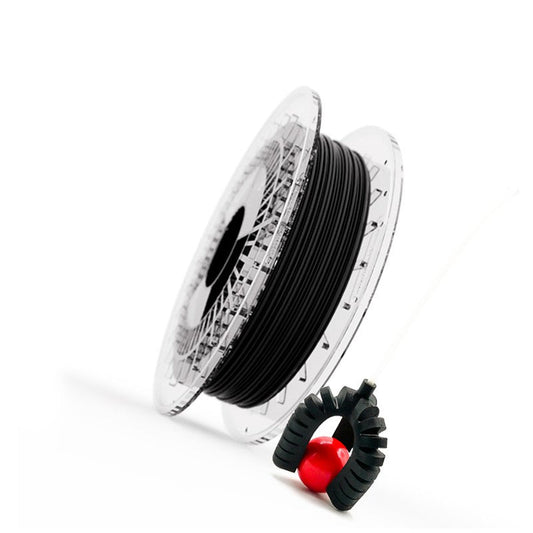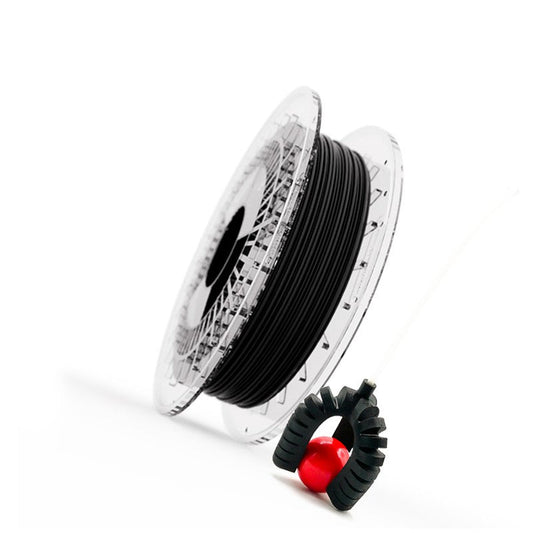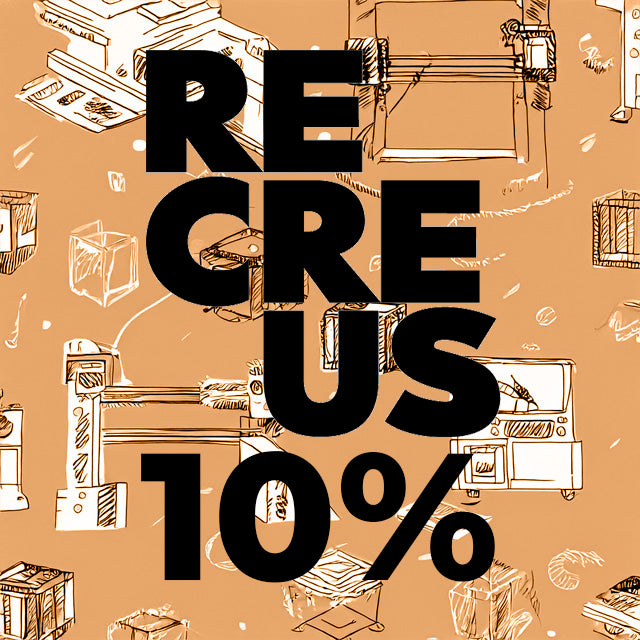Robotique Souple Sans Câbles : Comment le Filaflex 70A Propulse la Logique Pneumatique Imprimée en 3D
Robotique Sans Câbles : Comment le Filaflex 70A a Permis la Logique Pneumatique du Futur
Une innovation bio-inspirée alliée à l’impression 3D flexible
Imaginez créer des robots qui bougent, saisissent et interagissent avec le monde—sans électronique, câbles ni composants rigides. Ce futur est déjà une réalité grâce à un projet innovant de chercheurs de l’Université de Fribourg. En exploitant les propriétés uniques du Filaflex 70A, ils ont développé des circuits de logique pneumatique entièrement imprimés en 3D pour propulser la prochaine génération de robotique souple.
Test du robot souple marcheur sous charge extrême
1. S’inspirer de la Nature : La Meilleure Bioinspiration
La nature inspire depuis longtemps les ingénieurs et les designers dans leur quête de systèmes efficaces et adaptables. Dans ce cas, la posture courbée des doigts humains et le mécanisme de verrouillage des tendons des rapaces ont été essentiels pour concevoir une pince robotique avec des doigts naturellement courbés. Cette forme bio-inspirée améliore non seulement le temps de réponse, mais permet aussi aux actionneurs robotiques de saisir des objets avec une consommation d’énergie minimale.
Son design imite la courbure naturelle des doigts au repos, permettant une fermeture plus rapide—un concept crucial pour les applications de saisie à haute vitesse.

2. L’Importance du Matériau : Pourquoi Filaflex 70A a Changé les Règles du Jeu
Le succès du projet dépendait de la capacité à trouver un filament flexible capable de supporter une pression d’air interne, d’être imprimé avec précision et de conserver son intégrité structurelle avec des parois inférieures à 1 mm. Après l’évaluation de plusieurs matériaux, seul le Filaflex 70A a offert le bon équilibre entre élasticité, adhérence inter-couches et étanchéité.
- Permet des membranes étanches de seulement 0,5 mm d’épaisseur
- Excellente vitesse d’impression et finition de surface
- Assez flexible pour plier des tubes sans fissurer
- Parfaitement adapté aux systèmes pneumatiques et à la robotique souple
Sa polyvalence a permis à l’équipe de concevoir des modules logiques avec tubes et chambres intégrés—le tout en une seule impression sans supports.


3. Logique Pneumatique : Penser Numériquement Sans Électronique
L’une des avancées les plus révolutionnaires de ce projet fut la création de portes logiques pneumatiques—AND, OR, NOT—entièrement imprimées avec un matériau flexible. Ces portes utilisent des différences de pression d’air pour effectuer des fonctions de logique booléenne, permettant ainsi un contrôle total du robot sans électronique.
Cette avancée en intelligence pneumatique a permis :
- De contrôler les schémas de marche des robots souples à pattes
- D’automatiser des pompes péristaltiques pour le transport de liquides
- De créer des interfaces utilisateur basées sur la logique mécanique
- De concevoir des pinces ultra-résistantes pour des applications industrielles ou d’assistance
La conception modulaire permet de réutiliser et d’adapter ces composants à d’innombrables architectures robotiques.

4. Entretien avec le Dr Falk Tauber : Derrière la Percée
 Dr Falk Tauber – Université de Fribourg
Dr Falk Tauber – Université de Fribourg
Qu’est-ce qui a inspiré la conception de votre actionneur ?
“La courbure naturelle des doigts humains au repos et les griffes des oiseaux. Nous voulions des formes pré-courbées se refermant rapidement, comme dans la nature.”
Comment avez-vous choisi le Filaflex 70A ?
“Nous avons testé de nombreux matériaux. Le Filaflex 70A a été le seul à offrir vitesse, adhérence inter-couches et étanchéité—et à supporter facilement des membranes de 0,5 mm.”
Avez-vous rencontré des difficultés techniques ?
“Oui ! Réussir des impressions fines et étanches fut difficile. Nous avons expérimenté avec la pression d’extrusion, des réglages de flux personnalisés et des buses jusqu’à 0,8 mm.”
Quel a été le résultat le plus enthousiasmant ?
“Un robot quadrupède entièrement fonctionnel, sans électronique—imprimé d’un seul tenant avec uniquement du Filaflex 70A.”
Et la suite ?
“Nous visons une impression plus rapide, l’intégration de capteurs et des applications médicales. Le potentiel de cette logique est immense.”
5. Philosophie de Conception : Imprimer pour la Performance
Tout le système a été conçu en fonction des contraintes et des atouts de l’impression FDM flexible. Les chercheurs ont ajusté leurs modèles CAO pour éviter les porte-à-faux sans support, minimiser les rétractions de la buse et maintenir des canaux internes d’air fluides. Tous les circuits ont été imprimés en une seule session, sans matériau de support.
Ce procédé a produit des circuits non seulement fonctionnels, mais aussi propres visuellement, facilement reproductibles et évolutifs. Il prouve qu’une robotique souple bien pensée ne nécessite ni post-traitement ni assemblages complexes—seulement une conception intelligente et le bon filament.
6. Applications en Action : Résilience et Ingéniosité
La présentation de l’équipe incluait deux démonstrations principales :
- Un distributeur de boissons alimenté par un oscillateur pneumatique et des portes logiques—sans câbles
- Un robot souple à pattes ayant survécu à l’écrasement par une voiture de 1.800 kg, et qui a ensuite repris sa marche
Ces exemples démontrent la viabilité de la robotique flexible imprimée avec filament pour des applications concrètes—des usines aux zones de secours.
Conclusion
Ce projet novateur combine conception bio-inspirée, intelligence pneumatique et matériaux flexibles de pointe pour définir une nouvelle ère en robotique souple. Au cœur du système se trouve le filament TPU Filaflex 70A, qui permet des fonctionnalités autrefois considérées comme impossibles dans des systèmes imprimés en 3D. De la robotique aux applications biomédicales, ce travail marque un tournant vers une technologie plus intelligente, durable et accessible—entièrement propulsée par du matériau flexible.
À Propos de la Recherche
📄 Article Scientifique :
Logique Pneumatique Numérique Imprimée en 3D pour le Contrôle d’Actionneurs Robotiques Souples
Publié dans Science Robotics (AAAS)
Date : 31 janvier 2024
DOI : 10.1126/scirobotics.adh4060
Type : Article de recherche évalué par les pairs
🧠 Auteurs :
S. Conrad, J. Teichmann, F.J. Tauber*, P. Auth, N. Knorr, K. Ulrich, D. Bellin, T. Speck
*Contribution égale (F.J. Tauber & J. Teichmann)
Auteurs correspondants :
Dr Falk J. Tauber
Dr Stefan Conrad
🏫 Institutions :
Université de Fribourg, Allemagne
- Groupe de Biomécanique Végétale @ Jardin Botanique
- Cluster d’Excellence livMatS
- Centre de Fribourg pour les Matériaux Interactifs et les Technologies Bio-inspirées (FIT)
🧪 Technologie et Matériaux :
- Matériau : Filaflex 70A (Recreus)
- Fabrication : Impression 3D FDM, sans supports
- Systèmes : Portes logiques pneumatiques (AND, OR, NOT), distributeur de boissons, robot souple marcheur
- Logiciel : PrusaSlic3r 2.4 + paramètres de débit personnalisés
🎤 Entretien :
Des idées supplémentaires ont été partagées dans une interview exclusive avec le Dr Falk Tauber, offrant un aperçu des défis, du choix du matériau et de la vision des futures applications en robotique médicale et autonome.









